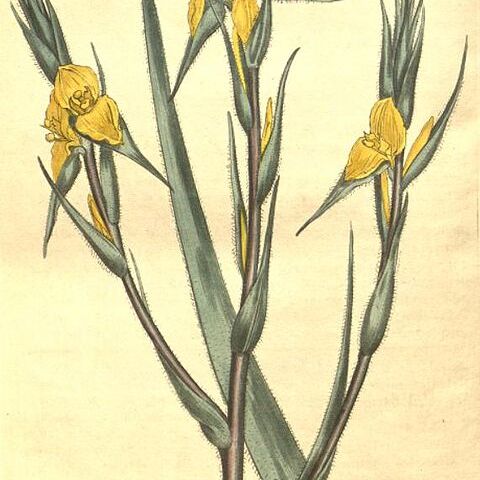Herbs, perennial, erect. Rhizome short. Leaves radical or crowded at stem base, basal and proximal cauline ones distichous, others smaller and spirally arranged; leaf sheaths equitant; leaf blade linear or ensiform, veins parallel, stomata paracytic. Inflorescence a spike, often branched; bracts spathelike. Flowers bisexual, sessile, zygomorphic. Perianth yellow or whitish; segments 4, in 2 whorls, petaloid, outer 2 larger than inner 2. Stamen 1, inserted at base of lower perianth segment; filament flattened, glabrous; anther basifixed, 2-loculed, dehiscing by longitudinal slits; pollen grains 2-nucleate. Ovary superior, 3-loculed and placentation axile or 1-loculed and placentation parietal; ovules numerous per locule, anatropous. Style simple; stigma capitate or obscurely 3-lobed. Fruit a 3-valved capsule, longitudinally dehiscent. Seeds numerous; testa helicoidally striate; endosperm developed; embryo straight.

